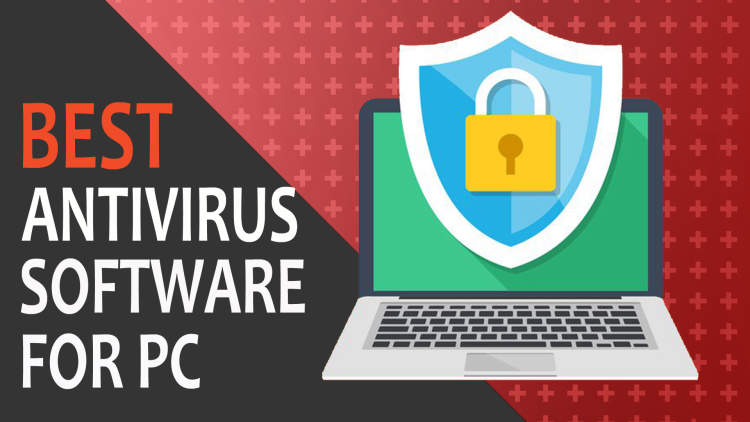Having antivirus software installed on your laptop is crucial in protecting it from harmful threats and viruses. In this article, we will guide you through the process of installing and updating antivirus software, ensuring the security of your device.
Installing antivirus software is a straightforward process. Firstly, you need to choose a reputable antivirus provider and download their software from their official website. Once the download is complete, locate the installation file and double-click on it. Follow the on-screen instructions to install the software and customize the settings according to your preferences. After the installation, your laptop will be shielded from potential threats, but it is essential to keep it up to date.
Choosing the Right Antivirus Software
When it comes to protecting your laptop from online threats, one of the most important steps is choosing the right antivirus software. With so many options available in the market, it can be overwhelming to make a decision. However, by considering a few key factors, you can ensure that your laptop stays safe and secure.
1. Determine Your Needs
Before selecting an antivirus software, it is essential to understand your specific needs. Are you a casual user or do you use your laptop for professional purposes? Do you require additional features such as firewall protection or parental controls? By determining your needs, you can narrow down the options and choose a software that best suits you.
2. Check for Compatibility
Ensure that the antivirus software you choose is compatible with your laptop’s operating system. Some software may only work on specific platforms, so it is crucial to verify compatibility before making a purchase. This will ensure that the software can run smoothly without any conflicts.
3. Consider Security Features
Look for antivirus software that offers a comprehensive range of security features. These may include real-time scanning, malware detection, web protection, and email filtering. The more robust the security features, the better protected your laptop will be against potential threats.
4. User-Friendly Interface
An antivirus software with a user-friendly interface can make your experience hassle-free. Look for software that is easy to navigate and configure. A simple and intuitive interface allows you to perform scans, updates, and other tasks efficiently.
5. Consider the Pricing
While free antivirus software is available, premium options often offer better protection and additional features. Consider your budget and the value you will be getting for your money. Research different software options and compare their pricing and features to make an informed decision.
6. Read Reviews and Recommendations
Before finalizing your decision, read reviews and recommendations from trusted sources. User reviews can provide insights into the effectiveness and usability of different antivirus software. Additionally, recommendations from tech experts can help you assess the reliability and performance of the software.
By following these guidelines, you can choose the right antivirus software for your laptop. Remember, investing in reliable antivirus software is a crucial step in ensuring the security and protection of your valuable data.
Step-by-Step Guide to Installing Antivirus Software

In this article, we will provide you with a detailed guide on how to install and update antivirus software on your laptop. Follow the step-by-step instructions below to ensure that your device stays protected from malware and other online threats.
Step 1: Research and Select the Right Antivirus Software
First, you need to research and choose the antivirus software that best fits your needs. Consider factors such as its features, detection rates, user reviews, and pricing. Once you have made a decision, proceed to the next step.
Step 2: Download the Antivirus Software
Visit the official website of the antivirus software you have selected and navigate to the download section. Choose the version compatible with your operating system and click on the download link. Save the setup file to a location on your laptop.
Step 3: Run the Antivirus Software Installer
Locate the downloaded setup file and double-click on it to run the antivirus software installer. Follow the on-screen instructions and agree to the terms and conditions. Be cautious of any additional software bundled with the installer and deselect them if necessary.
Step 4: Customize the Installation Settings (Optional)
During the installation process, you may be prompted to customize certain settings. This includes choosing the installation directory, enabling or disabling certain features, and configuring scan preferences. Adjust these settings according to your preferences and proceed with the installation.
Step 5: Complete the Installation Process
Once the installation is complete, you may need to restart your laptop for the changes to take effect. Some antivirus software may require you to create an account or enter the license key at this stage. Follow the instructions provided by the software to finalize the installation.
Step 6: Update the Antivirus Software
After installing the antivirus software, it is crucial to keep it up to date to ensure optimal protection. Launch the antivirus software and navigate to the update section. Most antivirus programs offer automatic updates, but you can also manually check for updates if needed.
Step 7: Perform a Full System Scan
Once the antivirus software is updated, it is recommended to perform a full system scan to detect any existing malware or viruses. This process may take some time depending on the size of your hard drive. Follow the instructions provided by the antivirus software to initiate the scan.
Step 8: Configure Scheduled Scans and Real-Time Protection
To ensure continuous protection, configure scheduled scans and real-time protection settings. Scheduled scans allow the antivirus software to automatically scan your laptop at specific intervals, while real-time protection monitors your system in real-time and blocks threats as they occur.
Step 9: Enable Firewall and Additional Security Features
Most antivirus software comes with additional security features, such as a firewall, web protection, and email scanning. Enable these features to enhance your overall protection against various online threats. Refer to the antivirus software’s documentation or settings menu for instructions.
Step 10: Stay Vigilant and Keep Your Antivirus Software Updated
Lastly, remember to stay vigilant while browsing the internet and downloading files. Avoid visiting suspicious websites or opening email attachments from unknown sources. Regularly update your antivirus software to ensure that it can effectively detect and protect against new threats.
Keeping Your Antivirus Software Updated
In today’s digital age, it is crucial to have reliable antivirus software installed on your laptop to protect it from malicious threats. However, simply having antivirus software is not enough – it’s equally important to keep it regularly updated. Here’s why you should make updating your antivirus software a priority, and how you can do it effortlessly.
Why is Antivirus Software Update Important?
Antivirus software works by scanning your system for known malware and viruses, and then removing them to keep your device safe. However, new threats emerge continually, and cybercriminals are constantly exploring new attack methods. To defend against these evolving threats, antivirus software requires regular updates that include the latest virus definitions and security patches.
Without regular updates, your antivirus software may not be able to recognize and block the latest threats effectively. This can leave your laptop vulnerable to various malware attacks, such as viruses, ransomware, spyware, or phishing attempts. By keeping your antivirus software updated, you ensure that your device is equipped with the latest defense mechanisms to combat these threats.
How to Update Antivirus Software on Your Laptop
Updating your antivirus software is typically a straightforward process. Follow these simple steps to keep your laptop protected:
- Check for Automatic Updates: Ensure that the automatic update feature is enabled in your antivirus software’s settings. This way, the software will regularly check for updates and install them automatically.
- Manual Update: If your antivirus software does not have an automatic update feature, you may need to check for updates manually. Open your antivirus software, navigate to the settings or update section, and click on the ‘Update Now’ or similar button.
- Internet Connection: To update your antivirus software, it is essential to have a stable internet connection. Ensure that your laptop is connected to the internet before initiating the update process.
- Restart if Required: In some cases, the antivirus software may prompt you to restart your laptop after installing updates. Follow the instructions and reboot your device if necessary to complete the update process.
By following these steps and keeping your antivirus software updated, you enhance your laptop’s security and minimize the risk of falling victim to cyber threats. Make it a habit to check for updates regularly or enable the automatic update feature, so you never miss out on crucial security enhancements.
Conclusion
Installing and updating antivirus software is crucial for maintaining the security and performance of your laptop. By following the steps outlined in this article, you can ensure that your device is protected against the latest threats and vulnerabilities.
Firstly, it is important to choose a reputable antivirus software from a trusted provider. With countless options available, make sure to read reviews and consider features such as real-time scanning, malware detection, and regular updates. Once you have selected your antivirus software, download the installation file from the official website and run the setup wizard. Follow the on-screen instructions to complete the installation process.

